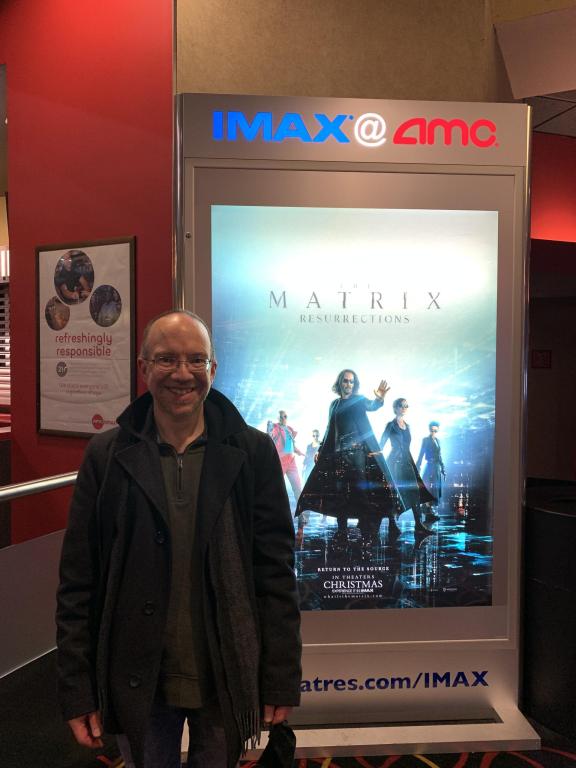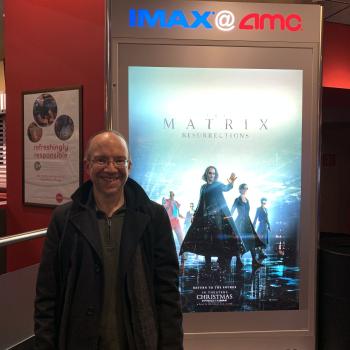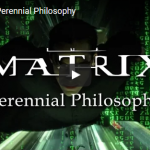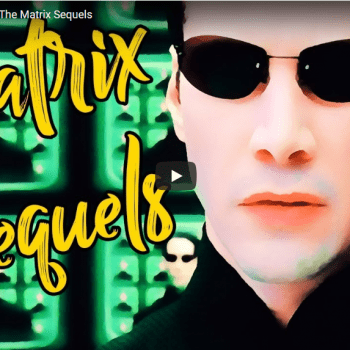The Matrix Resurrections is so meta that most of it may be lost on those who never saw the original trilogy. It is the resurrection of the franchise, of Neo and Trinity, and of the Matrix as a virtual world within the films. The movie comments on itself as well as the earlier Matrix films in a way that is not just “meta” for its own sake but insightful. The analyst who is the architect of the new Matrix seeking to provide power to his machine society after the peace Neo achieved led to scarcity has opted to harness human emotion’s increased energy over the kinds of rational matters the Architect of Reloaded and Revolutions focused on, not fully understanding humans. Because within the film Thomas Anderson is not only Neo but a computer programmer who created a trilogy of Matrix games which are the narrative world of the original films as well as perhaps his memories. The leaving of this question open for so long allowed the movie to move in a Total Rekall direction that the original trilogy did implicitly. Its primary source materials was of course Beaudrillard and his famous observation that once one can simulate reality perfectly, the distinction between the real and the simulated loses all meaning. There were moments when I worried about what the movie was going to do, how its reframing of the original trilogy might play out and what its consequences might be both within the story and for me as a fan. In the end I was satisfied, particularly appreciative that the movie addressed the fact that most “sheeple” want to be relieved of the burden of choice, even if the choice is an illusion. The movie problematizes the notion of choice time and time again, on specific narrative levels but also in ways that relate to everyday experience directly. Can you choose whether or not to have children when biology and upbringing have combined to move you in a particular direction? The movie also addressed how war and the Matrix can have the same effect, generating a noise that leads us to focus on what the system benefits from us focusing on without having any bandwidth left for anything that might awaken us to a wider reality.
I loved that characters addressed what the original trilogy meant–all the possibilities of what it might have represented–while themselves being within the very system that the original trilogy explored in its narrative. Meanwhile the film pushed that original relevance into the present day of misinformation and truthiness, when emotion and storytelling rules the day more than logic, information, analysis, or critical thinking. Yet the movie brought front and center, without doing so in an overbearing or unsubtle way, that the movie was ultimately about the transgender identity and experience of the sisters Lana and Lilly Wachowski, both of who identified as men when the original trilogy was made. The newer movies incorporate code that can obscure one’s true identity and/or appearance. So much makes more sense, including the casting in the lead roles of a man and a woman with androgynous aspects.
If anything was particularly meaningful to me it was the explicit incorporation of the fact that humans and synthients (as they prefer to be called) had indeed found ways to overcome their differences and build a shared society, even forging alliances and friendships. Peace and its demands can distract as much as war and egotism can from efforts towards liberation. While some will dislike it for this very reason, the lack of simplistic answers was wonderful from my perspective. While complete newcomers to the film would be puzzles by the exiled Merovingian, Agent Smith, and Sati, and perhaps by Neo and Trinity themselves, for fans of the original films these were all meaningful. For me, as someone for whom the whole trilogy was enjoyable and meaningful, I especially liked the crucial and visible role the character of Sati played. Love makes victory possible. Love risks losing everything. That is the ultimate tension that connects and runs through the entire franchise. I liked that Sati (the result of a union of love between machines that is itself subversive in the earlier movies) not only reappeared and had the dedication of will or obsession needed to find a solution, but said (the only character in the movie to do so) that she has prayed. She also says that, having done all they can, the rest requires a “miracle.” The religious overtones inherent in the characters of Sati and her parents takes off in new directions thanks to The Matrix: Resurrections.
Whether the final post-credits scene is worth waiting for, I will let you decide (if you see it). The music that plays during the final credits as throughout the movie will mean that the wait was worthwhile in and of itself. For me the big payoff of staying until the music was done was less the final brief clip but the words of the filmmaker Lana Wachowski that appear at the end of the credits sequence itself: “For mom and dad. Love is the genesis of everything.” The movie embodies the paradox that love is what enables us to transcend the constraints that seek to bind us, and love is what can make us willing to stay part of the system. I love that Neo faced that choice in an explicit way within the film. The movie fully and powerfully realizes what the filmmaker intended and what the franchise as a whole meant to her. What more can anyone want?
IO9 has had several reviews as well as a roundtable discussion of the movie. Here is a photo from my excursion to see the film in the real world. At least, I think it was the real world. Would it have been better to see it on a screen at home? Has the pandemic made us more aware of how we get into systems of delusion, or reinforced the blurring of boundaries between virtual and real? Or are such binaries false to begin with?
Have you seen The Matrix Resurrections yet? If so, what do you think of it? If not, what are you waiting for?















